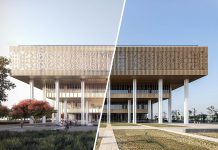With the development of the railway industry, the urgency to ensure efficient and safe operation with minimal human intervention has increased. Therefore, the technology of machine (computer) vision, which allows you to improve the performance of transport management due to advanced infrastructure diagnostics, has become in demand all over the world. It is an integral part of the auto-driving systems of vehicles, locomotives or systems that control the operation of production lines. Autopilot technologies have long been introduced into wheeled vehicles with its technological complexity and an abundance of traffic scenarios. The use of machine vision in railway transport, although it seems belated, is quite expected. Five years ago, the machine recognized 60–70% of obstacles, and today it is about 98%.
To collect and consolidate knowledge in the field of machine vision and effectively apply this technology both in mechanical engineering and in production, a competence center was created. One of the developments of the competence center is a locomotive remote control system that allows you to drive a train hundreds of kilometers away from it, say, in an office, at a special operator’s control panel.
Another task that the competence center solves is round-the-clock support for drivers. Driver fatigue is a source of danger both for others and for infrastructure and the environment as a whole. After all, fatigue that accumulates in the process of driving and distraction of attention can lead to undesirable consequences, up to an accident. To prevent undesirable consequences, a driver wakefulness monitoring system was developed, which analyzes the head position, gaze direction, key facial points and signals fatigue. This technical solution can significantly reduce the number of accidents, increase work efficiency and minimize the downtime of locomotives.
How does the “vision” of the locomotive
The principle of operation of the machine vision system of the locomotive is based on the integration of data from various sensors that are installed on each side of the locomotive in the direction of travel. Data processing is carried out on a high-performance computer using algorithms for detecting objects and obstacles located in different zones. Based on the results of the calculations, the system makes a decision on the necessary actions (sounding a sound signal, gaining/releasing traction, reducing speed by service or emergency braking) through interaction with the control and diagnostic system and the locomotive braking system. Click for more info here.
The system is also able to determine the location of the locomotive by combining data from video cameras and GPS coordinates. For this, a special digital map of the area is being built. The system has a separate version that allows the operator to provide the possibility of remote control of the locomotive.
Difficulties and features of development
The main tool for the functioning of the autopilot system are its “eyes” – sensors. Various video cameras and lidars are used as sensors in the locomotive machine vision system. Each of the sensors does its job of recognizing objects along the way. However, video cameras and lidars alone do not provide all the necessary information. For example, in bad weather or under conditions of insufficient / excessive lighting, the cameras are useless. Lidar is not as sensitive to weather conditions, but it is not able to recognize traffic lights. Only when all sensors are involved, due to the integration of data from them, the system will function in any weather conditions. Moreover, with the help of machine vision, you can detect a variety of objects – cars,
An additional source of information is the on-board systems of the locomotive. Thus, the composition positioning system allows you to determine the exact position of the machine on the map and provides the operator with the necessary data.
If video cameras and lidars are the “eyes” of the system that perceive information, then the “brain” is a neural network. However, making a neural network work requires an above-average computer. Fortunately, the train has the ability to place the necessary equipment and connect it to the power supply.
When developing the system, the operating conditions of the locomotive turned out to be a problem: high vibration, a large amount of fine dust (including conductive), high and low operating and storage temperatures. Such conditions greatly limited the choice of devices and complicated the work.
Another problem that we had to face was the formal confirmation of the system’s compliance with current standards and norms, some of which are obsolete and require serious updates. Solutions using machine vision technology are quite difficult to classify. Therefore, the specialists of the competence center proceeded from the functions that the system performs, assessed all the risks and their consequences, analyzed possible failures and various situations.
Machine vision technology reduces accidents, increases productivity, minimizes locomotive downtime, simplifies maintenance, and reduces time and labor costs. In addition, the system is quite versatile. After all, a set of sensors can be used for different solutions. For example, to control the quality of products manufactured by the plant, flow lines, automate movement in mine transport, control the leveling of the path and the condition of the mine itself. Such a transformation of the usual processes will make it possible to optimize the staff while maintaining the number of personnel by restructuring the organizational structure of the enterprise.



